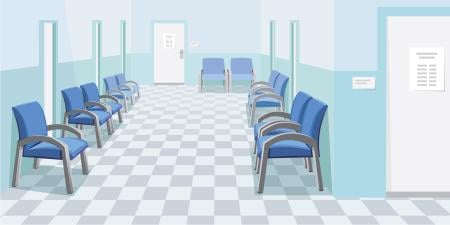Case
Martha was at her cousin’s house for a family dinner when she was approached by her Uncle John. John was one of her favorite uncles—he’d practically raised her for parts of her childhood and had helped her with her student loans during medical school. Since she’d become a doctor, she noticed he always took a certain pride in introducing her to friends as “My niece, the doctor.”
“What’s going on, Uncle John?” she asked.
“Well Martha,” he said, “I was wondering if I could ask you a couple of questions.”
“Sure,” Martha answered. “What’s up?”
“You see, I don’t want to bother you, and I know you must get this all the time, but I’ve just been having this terrible cough these last few weeks, and I don’t know what to do about it.”
“That’s no good,” Martha said. “Have you been to see your doctor yet?”
“No,” said Uncle John. “He was away on vacation, and then I called his office, and they said he wouldn’t be able to fit me in until next month sometime. I’ve just been feeling so sick—I could be dead by then!” He laughed. “That was a joke. I don’t really know if I want to bother my doctor about this. But I have been feeling pretty sick. I’ve had this cough, and a really bad headache. And I’ve been so tired. I just wonder if I’ve got something going on, and I was hoping you’d give me a quick once-over.”
Martha paused, and considered her options. Her Uncle John looked well enough, but he’d been a smoker for most of his life, and had already had one bout with cancer—a small tumor in his colon that’d been caught by routine colonoscopy. “Uncle John,” she said, “have you—” but then she stopped. “You know, Uncle John, I’d love to take a look, but I really shouldn’t. I think you’d do better to go see someone else. Maybe there’s someone else in your doctor’s practice who can see you on short notice? Or the walk-in clinic on Water and Main, if no one at the regular practice can see you and things keep getting worse. I’m sorry, but—do you think that would be alright?”
Uncle John looked hurt. “I suppose so, Martha. This has been going on for a couple of weeks—what’s one more night, right? Anyway,” he said, “I should talk to your cousins. I haven’t seen them in months!” He turned away, and Martha couldn’t help noticing that he avoided her for the rest of the evening.
Commentary
Should Martha have examined a family member? This case presents what must be a universal experience for physicians—being asked to get involved in a loved one’s care. Although the case involves a physician, I queried a group of fourth-year medical students this week, and they had all received similar requests. In this case, Martha does the right thing from a professional standpoint, but the narrative gives the impression that her response was personally unsatisfying. Part of the problem is that Martha’s justification, “I’d love to take a look, but I really shouldn’t” isn’t very convincing—to Uncle John, to us, or even to Martha herself. Probably like most physicians she was taught in medical school that it was unprofessional or perhaps unethical to treat one’s own family members. Perhaps she even remembered that the reason was that she might not be objective, but even with that added reason, her justification sounds weak.
I will share the approach of my mentor, Robert Potter, MD, PhD, to evaluating an ethical situation by looking at rules, goals, and roles. The first question is about rules—are there applicable laws, institutional policies, or professional guidelines that can help us here? There are no federal laws specifically prohibiting a physician from practicing medicine, writing prescriptions, or even performing surgery on a family member. Martha could have examined her uncle and even written a prescription for antibiotics for him without breaking the law. If she had written a prescription for a cough medicine containing a controlled substance, she might have broken a state law or violated a state medical board code, depending on which state she was licensed in. Some state laws or medical licensing boards prohibit physicians from prescribing controlled substances or psychiatric drugs to themselves or to family members except in emergencies [1]. However, even in states where it’s not expressly prohibited, medical boards may consider the practice unprofessional. The website Medscape maintains a state-by-state guide to opioid prescribing policies that may be helpful [2].
Professional medical practice also requires that a physician follow the same practices for any patient, meaning performing a physical exam and documenting the encounter in a medical record [3]. So if Martha did examine her uncle, she would need to document the encounter, including her findings, diagnosis, and treatment plan. A quick once-over at a family gathering may not meet this standard and therefore could be subject to disciplinary action by a medical board.
Medical professional ethics explicitly warns physicians not to treat family members. The American Medical Association Code of Medical Ethicsstates: “Physicians generally should not treat themselves or members of their immediate families. Professional objectivity may be compromised when an immediate family member or the physician is the patient” [4]. Does the use of the word “generally” indicate that there are situations where it might be appropriate?
LaPuma and Priest suggest that physicians can provide family members “acute emergency care and care for most minor recurrent predictable illnesses,” which sounds reasonable, but their justification, that in those instances “care may be given by the physician in the family without overwhelming his or her objectivity or breaching ethical principles, and with much convenience to all concerned” does not make complete sense [5]. Certainly objectivity is not greater during emergencies involving one’s family members, but in an emergency a physician may be compelled to treat a family member to prevent or minimize harm.
For other situations, LaPuma and Priest provide seven questions that physicians should ask themselves before getting involved in a loved one’s care. The questions are: (1) Am I trained to meet my relative’s medical needs? (2) Am I too close to probe my relative’s intimate history and physical being and to cope with bearing bad news if necessary? (3) Can I be objective enough not to give too much, too little, or inappropriate care? (4) Is medical involvement likely to provoke or intensify intrafamilial conflicts? (5) Will my relatives adhere more readily to medical recommendations delivered by an unrelated physician? (6) Will I allow the physician to whom I refer my relative to attend him or her? (7) Am I willing to be accountable to my peers and to the public for this care? These questions are excellent for alerting us to the potential unintended consequences for us and for our loved ones, but physicians whose objectivity is already compromised are unlikely to ask them.
In this case, the rules warn Martha not to examine or treat her uncle, but don’t expressly prohibit her from doing so. This brings us to Dr. Potter’s second consideration: what good goal are we trying to accomplish here? These are easier to see—ideally there are three: (1) Uncle John gets good medical care, (2) the relationship between Martha and her uncle is preserved or even strengthened, and (3) Martha doesn’t put herself or John at risk. It is now clearer why Martha felt dissatisfied. She avoided the risk involved if she were to provide substandard care to her uncle, but failed to see that he got good medical care and may have even weakened their relationship. How could she have accomplished all three goals?
A potential solution arises in considering Dr. Potter’s third consideration—what fitting role could Martha play in this situation to bring about a good or better outcome? There are a number of ways that Martha could be helpful to John, even if she didn’t have a medical degree. She could still show concern for her Uncle’s medical problem (“It sounds like you’ve been feeling pretty ill. Can you tell me more?”) Is this taking a history or simply showing concern? Asking “Can you tell me more” may sound like something a physician but not a nonphysician family member would ask. The point is not for physician family members to pretend they are not physicians, but to notice if they are beginning to slip into the physician role and consider whether that is fitting and necessary given the goals. Here the questions can further both Martha’s goal of ensuring that her uncle gets good care and her goal of supporting him and strengthening their relationship. She could then follow up and say “It sounds like your symptoms are not going away and are bothering you—I think they’re definitely worth getting checked out.” Is this giving medical advice or encouraging a family member to take his health seriously? Again, both goals are furthered.
To express a desire to help, Martha could say, “It sounds like it’s been hard to get in to see your doctor. Would you mind if I called him to see if I could get them to see you sooner? I could even come with you.” If Uncle John agrees, then Martha will have met all three of her goals; she will have avoided examining or treating her uncle while ensuring that he gets good care and feels cared for.
There is a line (or boundary, if you like) between personal and professional roles, and true professionals feel a twinge of conscience when they think they are crossing it. This twinge is an “early warning sign” that suggests you are entering potentially treacherous terrain. Once you feel such a twinge, the best course of action is to show concern by asking more questions. This shows that you are interested, gives you more information about what the issues are, and gives you the opportunity to think of a way that you can help without using your medical license. I would argue that in most cases, you can help your family members without using your medical knowledge to diagnose and treat their illnesses. Instead, act as a knowledgeable guide and facilitator to help them get the right care from someone else.
Because we know that, despite the rules and warnings, physicians commonly treat family members, in a previous publication my co-authors and I prepared a patient education sheet designed with physicians-in-training in mind [6]. It explains to family members why physicians should not necessarily be involved in caring for their loved ones. Medical students can use this sheet to help establish appropriate boundaries with their friends and family members early in their medical training.
Instead of invoking professional ethics that may not mean much to those who are not health professionals, we frame the issue in terms of risks and benefits. We classify different actions as low-, medium-, or high-risk by assuming that there is greater risk when deciding not to see a treating physician, when physician family members perform services that ordinarily only a treating physician would do, and when physician family members make decisions that are ordinarily made by the treating physician. Using this table, Martha’s examining John and making a diagnosis would be high-risk, but offering to help John get an expedient appointment or to accompany him to his doctor visit would be low-risk and therefore appropriate.
References
-
Commonwealth of Massachusetts Board of Registration in Medicine. Prescribing Practices Policy and Guidelines; 2010: 33. http://www.mass.gov/eohhs/docs/borim/policies-guidelines/policy-89-01.doc. Accessed March 2, 2012.
-
State-by-state opioid prescribing policies. Medscape. 2012. http://www.medscape.com/resource/pain/opioid-policies. Accessed March 2, 2012.
-
Medical Board of California. General office practices/protocols - frequently asked questions. http://www.mbc.ca.gov/consumer/complaint_info_questions_practice.html#13. Accessed March 2, 2012.
-
American Medical Association. Opinion 8.19 Self-treatment or treatment of immediate family members. AMA Code of Medical Ethics. Chicago: American Medical Association; 2006.
- La Puma J, Priest ER. Is there a doctor in the house? An analysis of the practice of physicians’ treating their own families. JAMA. 1992;267(13):1810-1812.
- Fromme EK, Farber NJ, Babbot SF, Pickett ME, Beasley BW. What do you do when your loved one is ill? The line between physician and family member. Ann Int Med. 2008;149(11):825-831.



